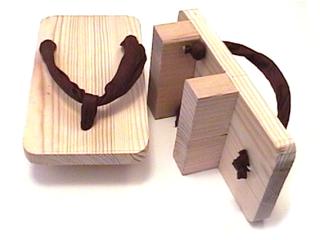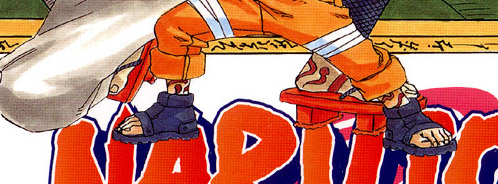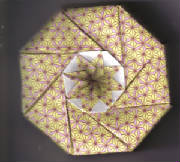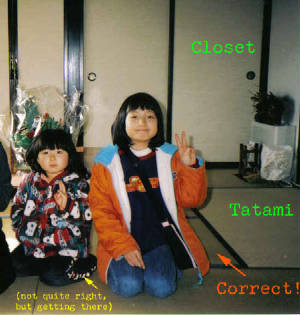|
...I couldn't think of anything confusing but the math.
1. Math.
The boys
are working on trigonometric identities. The list of "rules" Sasuke has are actually properties-- two of them I listed in
the story. Here's a fun example of how he might write his notes:
A. 1 = sin2(x) + cos2(x).
B. tan(x) = sin(x)/ cos(x).
2.
Purikura, small pictures on sticky film.
If you've
ever been to a mall where they have those photo booths-- the ones that print wallet-size or half that size pictures in minutes--
then you know the gist of purikura.
Add to
that a Photoshop-stamp-like feature that lets you put "stickers" and write on the photos, choose borders and basically scribble
stuff, and you know purikura.
Japanese
secondary school kids, especially the girls, are obsessed with purikura. They take
lots and lots of them and have entire photo albums full. . .like my classmate Rika. *Rolls eyes affectionately* anyways.
How many
pics you get to take home, how much it costs, and the size of those pics all vary.
But, as
Sakura-dear noted, it's a bit odd in Japan to take purikura
on your own. Usually, one goes with friends-- and splits the cost-- to have fun and goof off.
3. Home Room.
Japanese
classes don't move. You stay in the same class all day except for the classes you "get" to pick, like Math. Naruto
switches classrooms (and classmates, as you've probably noticed) then. But, for the most part, he stays in his classroom.
Iruka
is Naruto's homeroom teacher, if you haven't noticed. So it's Iruka's job to tell his homeroom about career tests and community
service. And yes, my school did do those things. -__- I was bored, bored, bored to tears.
4. Niisan, "older
brother."
Boys (from young kids to young men in their twenties)
call a man who's older than them (but not quite old) "niisan" to show friendly-respect. If a 10-year-old called a teenager
"Jiisan" they'd get mad. It generally implies that you're still young (and cool? Not sure) if you call someone "niisan" or
"neesan" instead of "jiisan" or "baasan."
5. Geta.
Geta are shoes. As Naruto noted, they were primarily used as rain shoes...so you don't get your feet wet when you walk
in puddles.
| Picture from: www.ee0r.com/ proj/geta.html |

|
| Elliot C Evans' picture |
| cover of Volume 11 from Kishimoto's Naruto |

|
| ...see Jiraiya's feet? They have red geta. |
6. "—:—:—:—"
and a switch to 1st person
present (ex. "I am writing it" vs. 1st person past "I wrote it") signifies a flashback.
That means
that I've cut to a differnt scene, basically. Only the scene happens to have occured some time (years, in this case) before
the present action. Usually this is done to give the reader some kind of insight to the character.
7. Origami boxes
"Ori"
comes from "oru" which means "to fold." And "gami" comes from "kami" which is "paper." Cool, huh? Anyways, it's basically
the art of making stuff with paper!! My friends in CA make really cool omiyage that they can ship to you..."KawaiiNekoHat"
is on the link page. Go look!
My host mom taught me how to make these. It does take 16 pieces of paper, but less time if you know
what you're doing. They're fun! I made about 40 of them with my host mom and our-neighbor-from-across-the-street's help.
| I made this in about half an hour. |

|
| It's a crappy scan...I don't have a camera. ^^; |
8. Foster families in Japan
I have
no idea how this works in Japan. I'm only assuming that they have something like foster
care...I don't know for sure. The subject never came up with my host-family. So, I'll only make allusions (references)
to it in Ai. But I'm assuming that it's about the same as American foster care...
Please
correct me if I'm wrong, ne?
9. Central Air and Heating in Japan
Most
houses don't have central air. That means it's very hot in the summer with lotsa portable fans, and very cold in the winter,
with lots of portable furnaces. It's not good for people who catch cold easily...like me. *Sighs*
10. Makura
I referenced
this in another chapter, but makura are Japanese rice pillows. They're very firm and good for your neck. ^^
11. Yukata
Referenced
in the first chapter. It's a light-weight kimono-type garment that's less heavy, less expensive, easier to put on, and more
practical. (Go to Footnotes Chpater 1 to see pics).
12. Okaeri and Tadaima
Translated
in the text. Basically, you say it when you get back home, and whoever was home before you welcomes you back. I suspect it’s
also to make sure people know when you get home.
Okaeri...the
"o" is honorific. I suspect that "kaeri" comes from "kaeru" (to go home) and sometimes "nasai" is attached to make "okaerinasai."
The "nasai" is basically formalities...maybe a "very"?
Tadaima...is said only by the person waiting for you at home. ^^ I don't know the roots for this one. Enlighten
me if you do?
13. Yo
It's a
greeting. It's rather informal and boy-ish. Simmilar to "osu" which is "hey," BTW.
14. Seiza, formal way to sit.
Very formal, and it causes knee stress/strain on your joints when you're older (like Jiraiya).

|
| These kids are somehow related to my host mom... |
Seiza! More pictures.
A "how to" seiza/kendo/something site (not mine).
^_^ Yep. There's lots to view this time...
Back to Chapter Five.
On to Chapter Six
|



